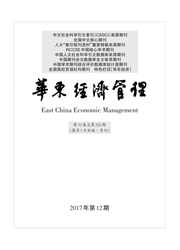

 中文摘要:
中文摘要:
文章运用三阶段DEA模型对我国2015-2016年民族地区实施旅游扶贫结果进行效率评价。结果发现:BCC模型分析发现我国旅游扶贫技术效率0.704、纯技术效率0.893、规模效率0.766,三个指标都是1的省区有吉林、广西、贵州、云南省,规模报酬降低的是辽宁省,其余省区规模报酬均递增;通过SFA分析发现旅游偏好、居民自由分配收入、公路密度对旅行社数量、从业员、固定资产投入有着不同程度的影响;在剔除环境因素和随机扰动项之后旅游扶贫效率发生小幅度变化,规模效率是技术效率增长的主要驱动因素。由于每个地区资源、发展状况不同,因此在落实旅游扶贫的时候,需要根据不同地区的特点采取针对性的措施。
 英文摘要:
英文摘要:
This paper uses the three-stage DEA model to evaluate the efficiency of tourism poverty alleviation in ethnic areas in China from 2015 to 2016. The results show that: BCC model analysis finds that China's tourism poverty alleviation technology efficiency is 0.704, pure technical efficiency is 0.893, and scale efficiency is 0.766, the provincial-level administrative areas with the three indicators are 1 in- clude Jilin, Guangxi, Guizhou and Yunnan. In addition to Liaoning province, the scale returns of the rest areas are increasing; The SFA analysis finds that the impacts of tourism preferences, residents' free distribution of income and road density on the number of travel agen- cies, practitioners and fixed assets investment are different; After excluding environmental factors and randomized perturbation, the effi- ciency of tourism poverty alleviation has changed slightly, and the scale efficiency is the main driving force of technical efficiency growth. As each region's resources and development level are different, it is necessary to adopt targeted measures according to the characteristics of different regions in implementing tourism poverty alleviation.
 同期刊论文项目
同期刊论文项目
 同项目期刊论文
同项目期刊论文
 期刊信息
期刊信息
